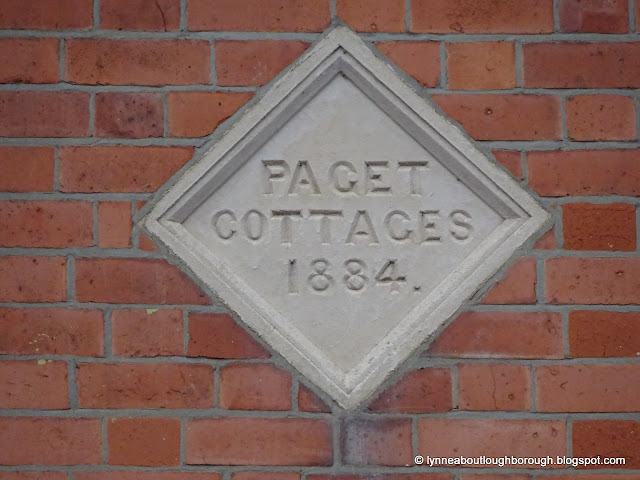 |
| Paget Cottages - some of the earliest to be built on Paget Street |
The lockdown periods of 2020-21-22 (depending on where you lived!) were probably the most shocking thing to have happened to us all, for a very long time, and so are still in our memory. During that time, while some people were getting to grips with working from home, and all the trials and tribulations that brought with it, others found themselves with more free time, stuck at home, unable to do the things they usually did, so might have embarked on some kind of project.
Sharon is one such person who took up a project. This involved researching a very interesting part of Loughborough and its history, and provided so much information that she wrote up her research in a book [1]! In the article below, Sharon tells us how she went about doing her research, and shares some of her discoveries with us …
My Lockdown Project
Paget Street, Loughborough 1891. A Glimpse into History
Sharon Gray
Lockdown came as a bit of a shock to me. As a Volunteer, I had been on duty in Loughborough Library Local Studies two days a week. I had also been working on projects for exhibitions and spending many hours researching family history for customers both in the library and at home. With Lockdown, these activities all came to an abrupt halt. I needed something to keep my mind active.
About two years previously I had begun investigating the Loughborough street where I grew up – Paget Street in the “Golden Triangle”. Paget Street is in the centre of a set of streets including Station Street and Storer Road. They were built in the late 1800s to house workers in the local factories, mainly Messengers, hence it was known as “Messenger’s Village”. [2]
 |
| View along part of Paget Street to Derby Road |
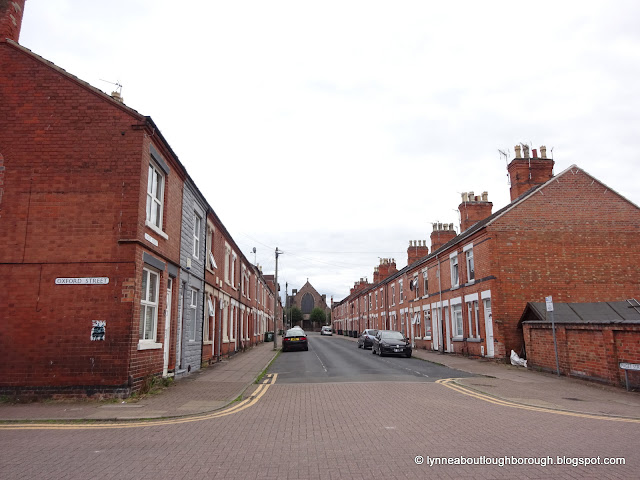 |
| View along part of Paget Street to Storer Road and St Peter's Church |
Knowing that construction for all the houses on Paget Street would have been completed by 1891, I began by looking in the Census for that year. The Census would provide me with a complete record of the terraced houses and their occupants. The land had been donated by local landowners such as Mr. Paget and Mr. Storer. The site was then divided into plots, allowing spaces for three or four houses, all to be built as a terrace. These plots were then sold off to private landlords and builders.
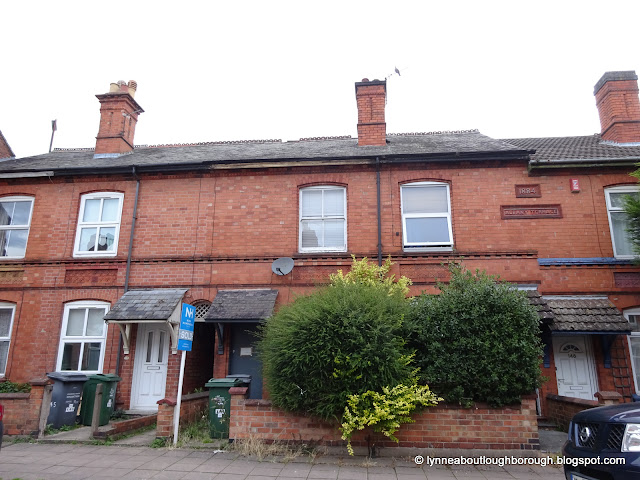 |
| Row of cottages called Albany Terrace, likely built by one builder, the roof levels being different only because of the slope of the street |
As the houses were completed in blocks of three and four, all of them followed a similar but not exact design to the houses on adjacent plots. For example, some would have had different windowsills or roof heights, some were given builder’s plaques with house names such as “Nelson Houses 1890”. As the landlords and builders began to offer the houses for rent, it emerged that in most instances they were too expensive for low-paid factory workers. Consequently, skilled workers such as plasterers and bricklayers, bakers, clerks and teachers moved in. It turned out that Messenger’s workers were not among the first occupants of these houses in the numbers that had been predicted.
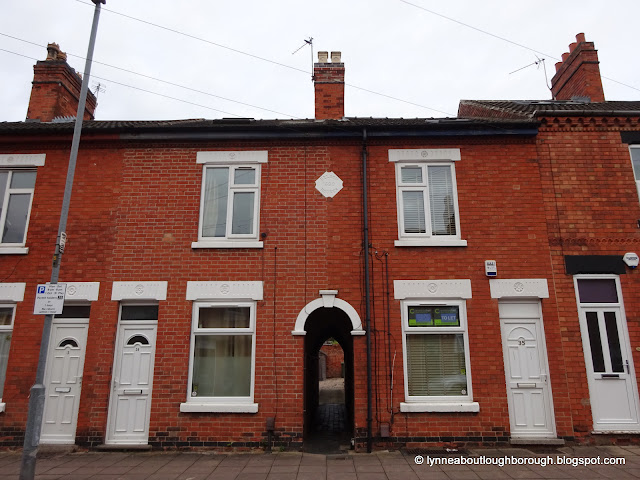 |
| Nelson Houses on Paget Street |
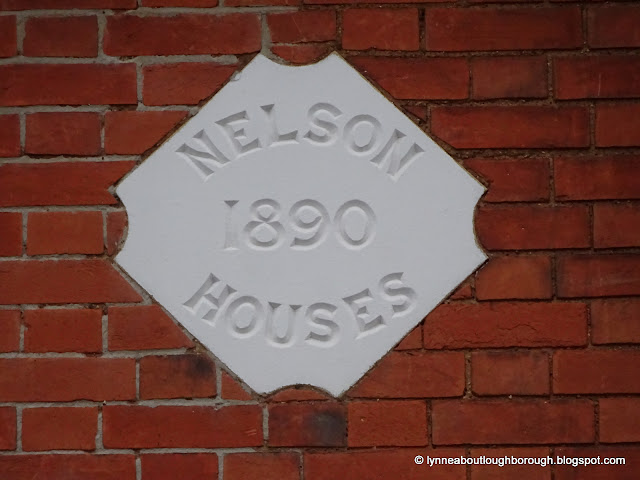 |
| Nelson House plaque, showing construction date of 1890 |
My mind was kept active and occupied by working through the 1891 Census house by house, numbers 1 to 150. Finding out what happened to these families in the years after they moved into Paget Street appealed to my family historian curiosity. Most of the tenants were transient, staying for only a few years until they moved on to another house or another town.
My research then expanded into the occupations of the people who lived there in 1891, and how this contributed to Loughborough’s industrial scene. They worked for Morris’s, Cotton’s, Cartwright and Warner to name but a few. There was a plethora of small businesses such as grocers and tailors. I also looked at how the war impacted the families and found stories about soldiers and their exploits.
 |
| A shop on the corner of Oxford Street and Paget Street now converted to housing |
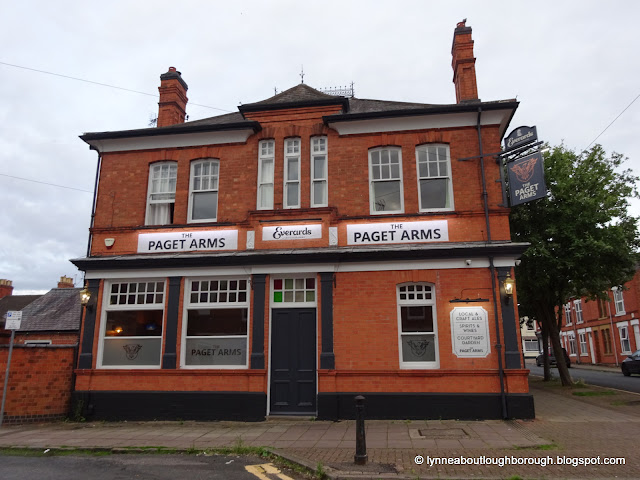 |
| The estate pub, the Paget Arms |
In 1956 my father, who had been a German POW, was offered work at William Hammond’s needle factory. The chance to buy no. 119 Paget Street with a council mortgage, was too good an opportunity to miss. My parents, my brother and I, packed up our goods and moved from rural Lincolnshire to Loughborough. My parents were both very proud when 25 years later they owned their house on Paget Street. My mother described it to me as a palace, compared with the prefab they lived in before they moved to Loughborough. Today an outside toilet and coalhouse would not be regarded as ideal. I have memories of an idyllic childhood, playing football in streets with no traffic, bike rides in the countryside and going to the “rec” with friends. I wonder what the children in 1891 thought of Paget Street?
The house I lived in for 23 years has now been refurbished and modernised and is home to new people. They will no doubt have completely different memories to mine of living in Paget Street – hopefully happy ones.
 |
| No. 119 Paget Street, left |
Sharon Gray
Loughborough Library Local Studies Volunteer Group
____________________________________
Biography
Sharon is a volunteer with the Loughborough Library Local Studies Volunteer Group, where her skills and experience in genealogy are put to good use, helping visitors to unlock some of their family history. Along with other volunteers, Sharon also gets involved in – and indeed organises – other research activity into various aspects of Loughborough’s history, is involved with preparation and hosting of the varied displays in the local history part of the library, looks after the books for the group (financial books, that is!), and is often seen promoting the work of the group at various heritage events. Before becoming a volunteer, Sharon, along with her husband, ran a hosiery company in the town.
____________________________________
Notes
[1] The book is available to purchase from the
Loughborough and Family History Centre, which can be found towards the rear of
the older part of the Loughborough Public Library on Granby Street.
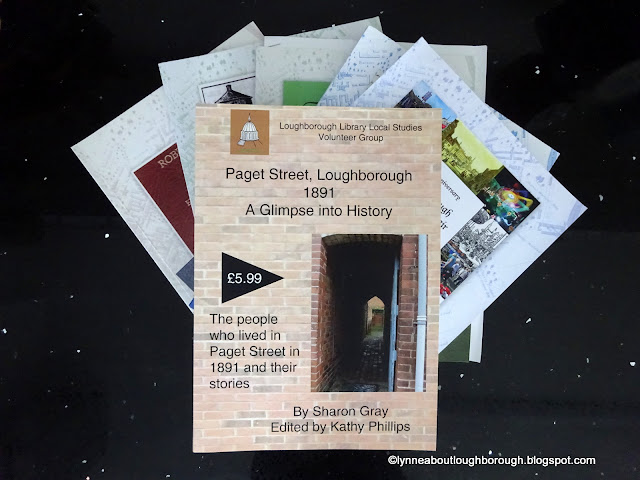 |
| A selection of publications by the Loughborough Library Local Studies Volunteers |
[2] A complementary article about this area appears in my post about Fearon Street and there is a similar, shorter study of Middleton Place
____________________________________
Posted by lynneaboutloughborough
With apologies for
typos which are all mine!
_______________________________________________
Thank you for reading this blog.
Copyright:
The copyright © of all content on this blog rests with me, or in the case of guest blogposts, with the named Guest Blogger. However, you are welcome to quote passages from any of my posts, with appropriate credit. The correct citation for this looks as follows:
Gray, Sharon (2023). My Lockdown Project: Paget Street, Loughborough. Available from: https://lynneaboutloughborough.blogspot.com/2023/07/my-lockdown-project-paget-street.html [Accessed 16 August 2023]
Take down
policy:
I post no pictures that are not my own, unless I have express permission so to do. All text is my own, and not copied from any other information sources, printed or electronic, unless identified and credited as such. If you find I have posted something in contravention of these statements, or if there are photographs of you which you would prefer not to be here, please contact me at the address listed on the About Me page, and I will remove these.
Blog
archive and tags:
If you are viewing this blog in mobile format, you will not be able to easily access the blog archive, or the clickable links to various topics. These can be accessed if you scroll to the bottom of the page, and click 'View Web Version'. Alternatively, there is also a complete list of posts, which when clicked will take you to the page you are interested in.
Searching
the blog:
You can search the blog using the dedicated search box that appears near the top of the blog when viewed in the web version. Alternatively, you can search using your usual search engine (e.g. Bing, Google, DuckDuckGo etc.) by following this example:
site: https://lynneaboutloughborough.blogspot.com/ “Radmoor House”
NOTE – the words you’re actually looking for must be in “” and the first of these must be preceded by a space
Thank you for reading this blog.
Lynne
No comments:
Post a Comment
If you have found this post interesting or have any questions about any of the information in it do please leave a comment below. In order to answer your question, I must publish your query here, and then respond to it here. If your information is private or sensitive, and you don't wish to have it on public display, it might be a better idea to email me using the address which is on the About Me page, using the usual substitutions: if you take the email route, our conversation remains private, and is not published on the blog. Thanks for reading the blog.